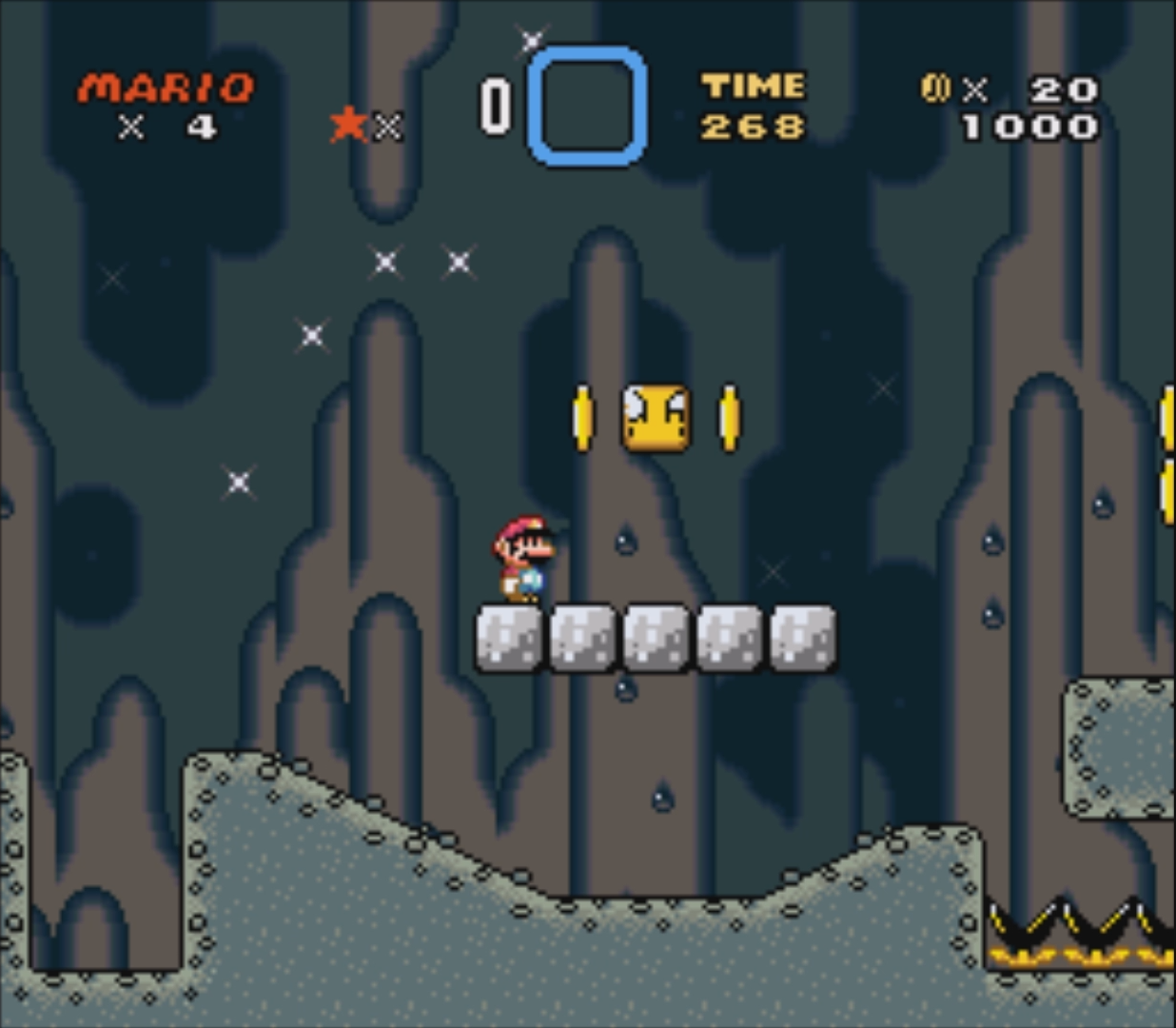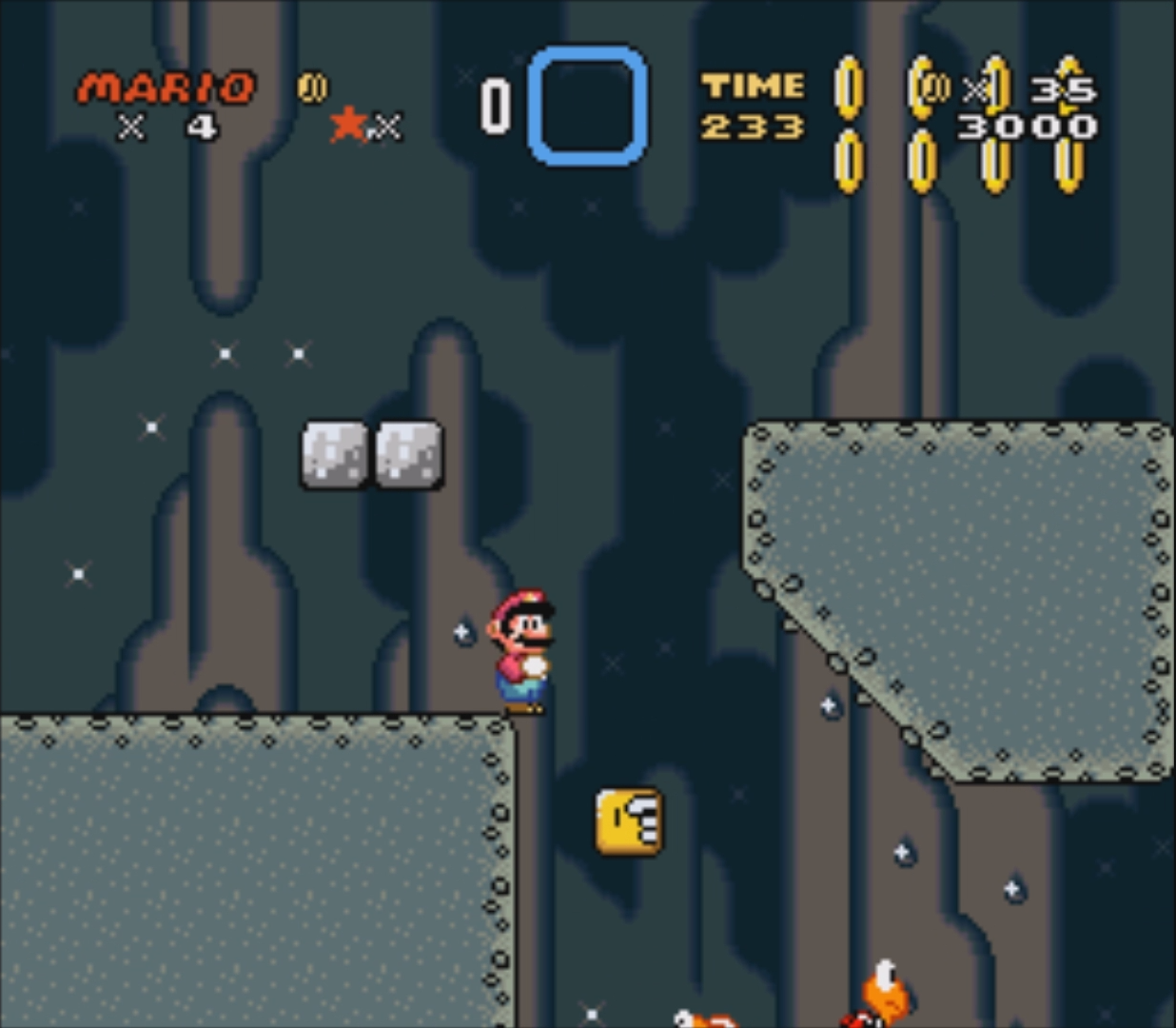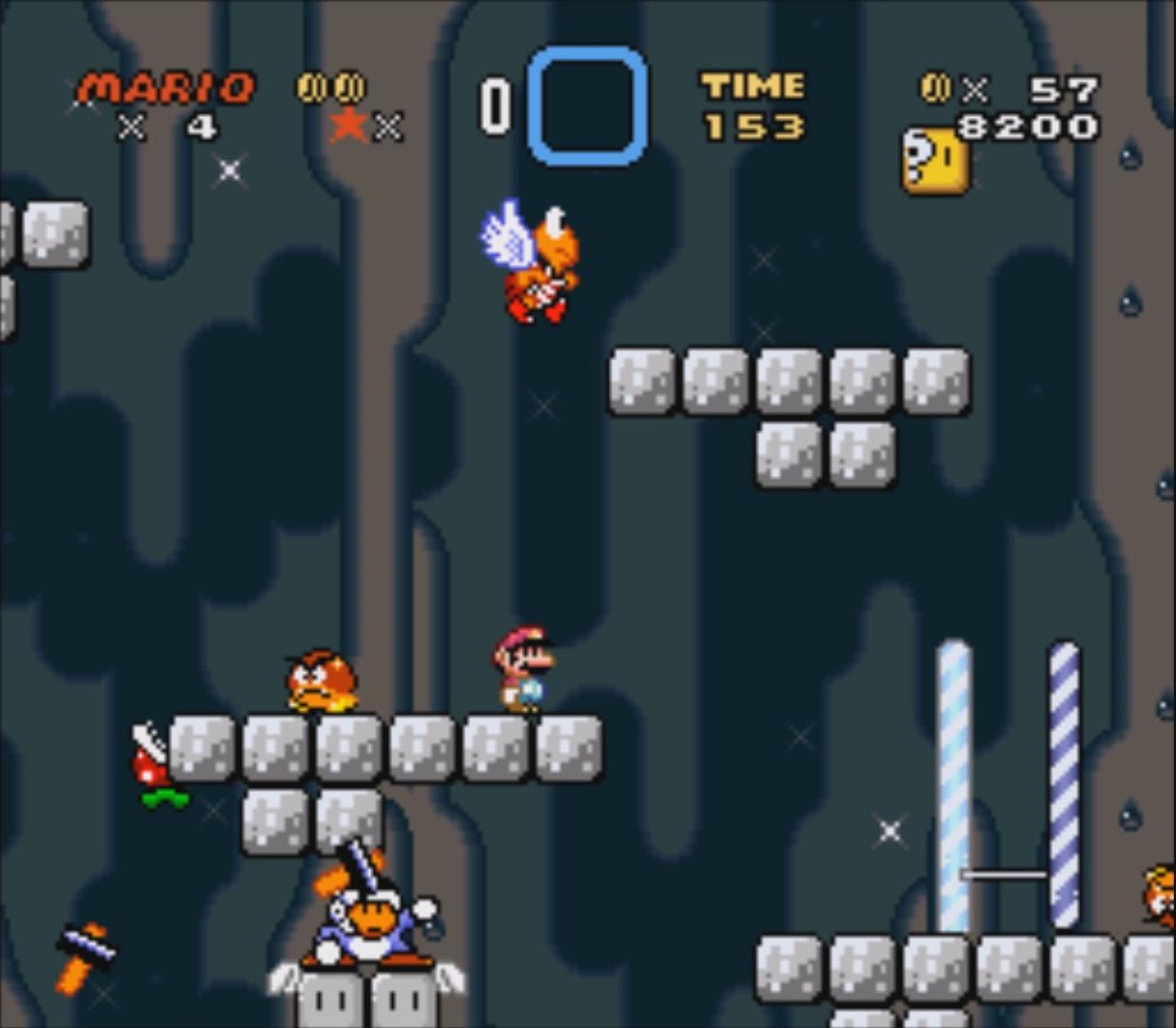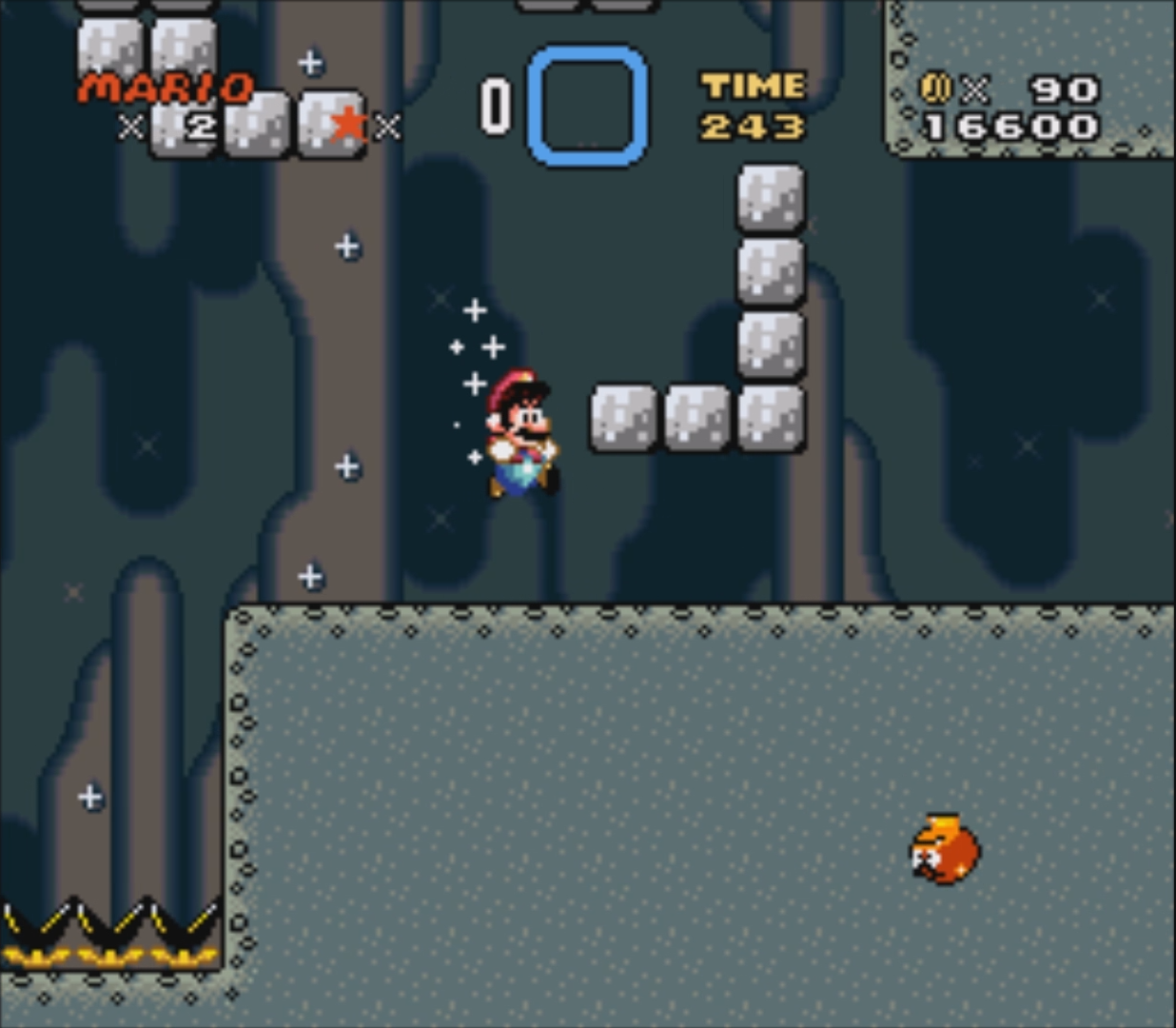This was a timid attempt to tutorialize the gaps in the level showing the difference between the first, harmless one and the second, filled with lethal carnivore plants.
I don’t think it worked very well: the shape of the two pits is too different and there is additional geometry above the second one. This defeat the purpose of this design, because players are not able relate these two environments.
I kind of did what I was supposed to do at the third step: adding a twist to the mechanic that I wanted to teach. To be honest, nobody felt inside of the second pit, probability because every playtester already played Mario games.




